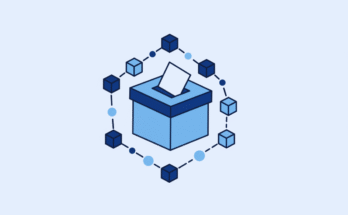In today’s digital age, data breaches are becoming alarmingly frequent, and the latest breach exposing 16 billion passwords is a stark reminder of how vulnerable our personal information can be. While the scale of this breach is shocking, it also serves as an opportunity to reflect on how we can better protect ourselves online. If you’re wondering what steps to take to safeguard your digital life, you’re in the right place. Here are the top seven security takeaways from this massive data breach, explained in a friendly and straightforward way.

1. Stop Reusing Passwords Across Accounts
Let’s face it, many of us are guilty of using the same password for multiple accounts. It’s convenient, but it’s also one of the riskiest habits. If one account gets compromised, hackers can easily try the same password on your other accounts. Think of it as a domino effect one breach can lead to many.
The fix? Use unique passwords for every account. Yes, it might sound overwhelming, but password managers like LastPass, Dashlane, or Bitwarden can generate and store complex passwords for you. They’re like your digital vault, making your life easier and more secure.
2. Enable Two-Factor Authentication (2FA)
Two-factor authentication (2FA) is one of the simplest yet most effective tools to add an extra layer of security to your accounts. Even if a hacker gets hold of your password, they’ll still need a second verification step like a code sent to your phone or email to access your account.
Most major platforms, like Google, Facebook, and Amazon, offer 2FA as an option. If you’re not using it yet, now’s the time to enable it. It’s a small step that can make a huge difference in keeping your accounts safe.
3. Avoid Using Personal Information in Passwords
It might be tempting to use something memorable like your pet’s name, birthday, or favorite sports team as a password. But here’s the problem, hackers often rely on publicly available information to guess passwords. If you’ve shared personal details on social media (and let’s be honest, most of us have), you’re making it easier for them.
Instead, opt for random combinations of letters, numbers, and symbols. A good trick is to create a passphrase a string of unrelated words that’s easy for you to remember but hard for others to guess. For example, “PurpleGiraffe$Pancake!” is far more secure than “Fluffy123”.
4. Regularly Update Your Passwords
When was the last time you changed your passwords? If you can’t remember, it’s probably been too long. Regularly updating your passwords is a simple way to stay ahead of potential breaches. Even if your credentials have been leaked in the past, changing them frequently reduces the likelihood of hackers being able to exploit them. Set a reminder every few months to update your passwords, especially for critical accounts like email, banking, and social media.
5. Be Cautious with Public Wi-Fi
Public Wi-Fi networks are convenient but notoriously insecure. Hackers can easily intercept data on these networks, including login credentials. If you’re logging into accounts or entering sensitive information while connected to public Wi-Fi, you’re putting yourself at risk.
The solution? Use a Virtual Private Network (VPN) whenever you’re on public Wi-Fi. A VPN encrypts your internet connection, making it much harder for hackers to snoop on your activity. Alternatively, avoid accessing sensitive accounts until you’re back on a secure, private network.
6. Check if Your Information Has Been Leaked
After hearing about a breach like this one, it’s natural to wonder if your own credentials are part of the stolen data. Fortunately, there are tools that can help you find out. Websites like Have I Been Pwned allow you to check if your email address or phone number has been involved in any known breaches. If you discover that your information has been compromised, change your passwords immediately and monitor your accounts for any suspicious activity.
7. Stay Informed About Cybersecurity Best Practices
The world of cybersecurity is constantly evolving, and staying informed is one of the best ways to protect yourself. Follow reliable sources for updates on new threats and security tips. Many organizations also offer free resources and guides to help individuals improve their online safety.
Additionally, educate yourself about phishing scams and other common tactics hackers use to steal information. The more you know about these threats, the better equipped you’ll be to avoid them.
Conclusion
The exposure of 16 billion passwords is a wake-up call for all of us. While data breaches are often beyond our control, there are plenty of steps we can take to minimize the risks and protect our personal information. By creating strong, unique passwords, enabling two-factor authentication, and staying cautious online, you can significantly reduce your chances of falling victim to cybercrime. Remember, online security isn’t just about technology. It’s about building good habits and staying vigilant. You’ve got this! Stay safe out there in the digital world.



![[Tesla Stock vs. Bitcoin] Which One Leads the Market in 2025?](https://mineatech.com/wp-content/uploads/2025/06/tesla-stock-vs-bitcoin-which-one-leads-the-market-in-2025-348x215.png)